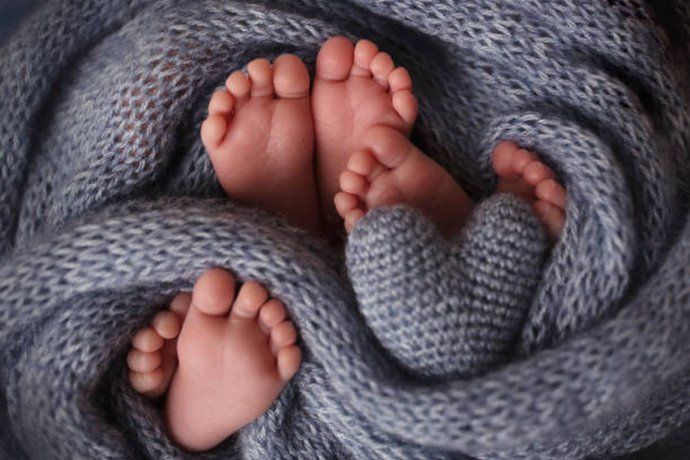Among the conclusions about this decline, the study indicated that:
- It occurs more in urban areas than in rural ones;
- It is accentuated by increasing social stratum and educational level;
- Economic cycles significantly influence procreational decisions: “In contexts of economic instability and deterioration of employment, families tend to postpone or reduce the decision to have children.”
In parallel, he highlighted data on two specific populations of the demographic pyramid: the youngest and the longest. Both groups, considered “economically dependent on people of working age”, They suffered alterations.
According to the report, between the 2010 and 2022 census, the population from 0 to 14 years was reduced from 39% to 33% in Argentina, while the group of 65 years or more increased (15% to 18%). After the publication of this study, this week the president Javier Milei He related this low birth to the existence of legal abortion, during the Amcham business summit.
Argentina and its “population aging”
Another report indicates that Argentina is going through a “Population aging process” And links it to two phenomena: “The relative decrease of the youngest population and the Mortality reduction“
The study “The future of care“, from the organization Found Published in March 2025, it describes that these two aging factors are due to “the fall in birth” and the improvements in the living and health conditions of the population. “
The call Global fertility rate refers to “Number of births of living children per woman. “ According to the organization, its trajectory increased by 2% between 1950 and 2015 in the country, but from there “this trend was drastically reversed.” “By 2022, fertility in our country recorded a 34%drop,” says the document.
Kalos currently mentions a “lack of perspective for an improvement of income” and “a family pauperization.” Thus, there is an “economic condition” that leads many people to have a little perspective for the future since it costs them to decide if having children.
In addition, he stressed that “the big problem” with this panorama are the “macroeconomic crisis, a productive structure that lacks policies and coordination between the public sector and the private sector to develop “.
In that scenario, the director stressed that “the discussion cannot happen because a important part of the older adult population is poor, because we are condemning them to work when is no longer in conditions And/oa depending on relatives “, and added that” from there to seeing more elderly people living in the street, There is a step“
For Kalos, the countercara of this process is the Labor informality, that “this problem becomes particularly pressing”: “It is not just that there are more older adults, but that Young adults do not contribute social contributions or through other taxes In an increasingly informal economy“
old age.jpg
From Epyca they point out that “the discussion cannot happen because an important part of the older adult population is poor.”
Freepik.
What can come for the future
When asked about “what awaits us now,” Kalos said that with more people than in the coming decades“We will have more passive population in relation to the one in a work situation”.
On how this decline can affect the economy, the economist said that some of the phenomena “that are” are “More retirement to pay and more population of retirement age“. At the same time,” probably with less and less proportion of people having met the requirements to retire. “
On the other hand, Botto stressed that the demographic triangle was invested with “more older adults than young people” and that “that is a problem for the pressure generated by pension systems”: “There is a government search to extend the retirement age that has to do with that.”
Few births: Because of abortion?
While talking about the importance of productivity distributed among several people, President Milei pointed out that “The role of the population is essential for economic growth“. In that line, he mentioned the 2030 Agenda and” of Progress “:” Now they are realizing that They passed their hands to attack the family, both lives, and now we are paying it with falls in the birth rate“
And he stressed that a current fear is “that the world stays without people” and that “if we thought about it before We would have saved enough murders in the belly of the mothers“. When consulted, the sociologist and director of the Gender Area of the Organization Found María de las Nieves Puglia He supported this medium that “data quickly disarms” to this type of statements.
“Birthday falls deeply from 2014 and the law is approved at the end of 2020. The fall is an indicator of modernity, It happens in more developed societies, “he recalled. In addition, he explained that the decrease is explained by various causes, including” the mass and heterogeneous income of women to women labor marketto secondary and higher education, to methods of sexual and reproductive health and cultural factors. “
Baby Twins. JPG

Sources dismissed the low births due to legal abortion: “Birth falls from 2014 and the law is approved at the end of 2020”.
On the other hand, Botto pointed out that this type of thought “is not an evidence -based statement since abortions did not increase as birth” but these “became safe” and added that “the birth rate comes in a low trend from much earlier” that abortion became law in our country.
Women, between work I pay and non -payment
Despite this increase in female presence in labor and educational fields, Puglia ubica that “we continue to have a disproportionate charge of unpaid care work “: “Women have a double and triple work day between payment and non -payment.”
“Without schemes that distribute more responsibility, and infrastructure that allow downloading those hours among other actors that could take care of, I do not see more friendly and compatible parenting conditions with contemporary life“The sociologist said in relation to current licensing systems.
In addition, he added that this is aggravated in the case of those between 30 and 50 years. These manage care “up and down: between their children and their parents”: “Women in the demographic transition We are true women sandwich“
Botto argues that “the asymmetric distribution of care tasks means that, when deciding to be mothers, women have to Keep in mind that this comes an extra working day that in many cases will not be pay or recognized. “
The economist emphasizes that if there was a more active role “of the State in parenting” and the private sector with “maternal-patchrime spaces for its workers,” then “It would be a more interesting discussion to think about how to increase birth. “
To these spaces, he also thinks with greater presence of neighborhood clubs, broader school days, sport spaces and extracurricular trainingwith the State assuring them “so that it is not a penalty in the career of women to make the decision to be mothers.”
Source: Ambito




